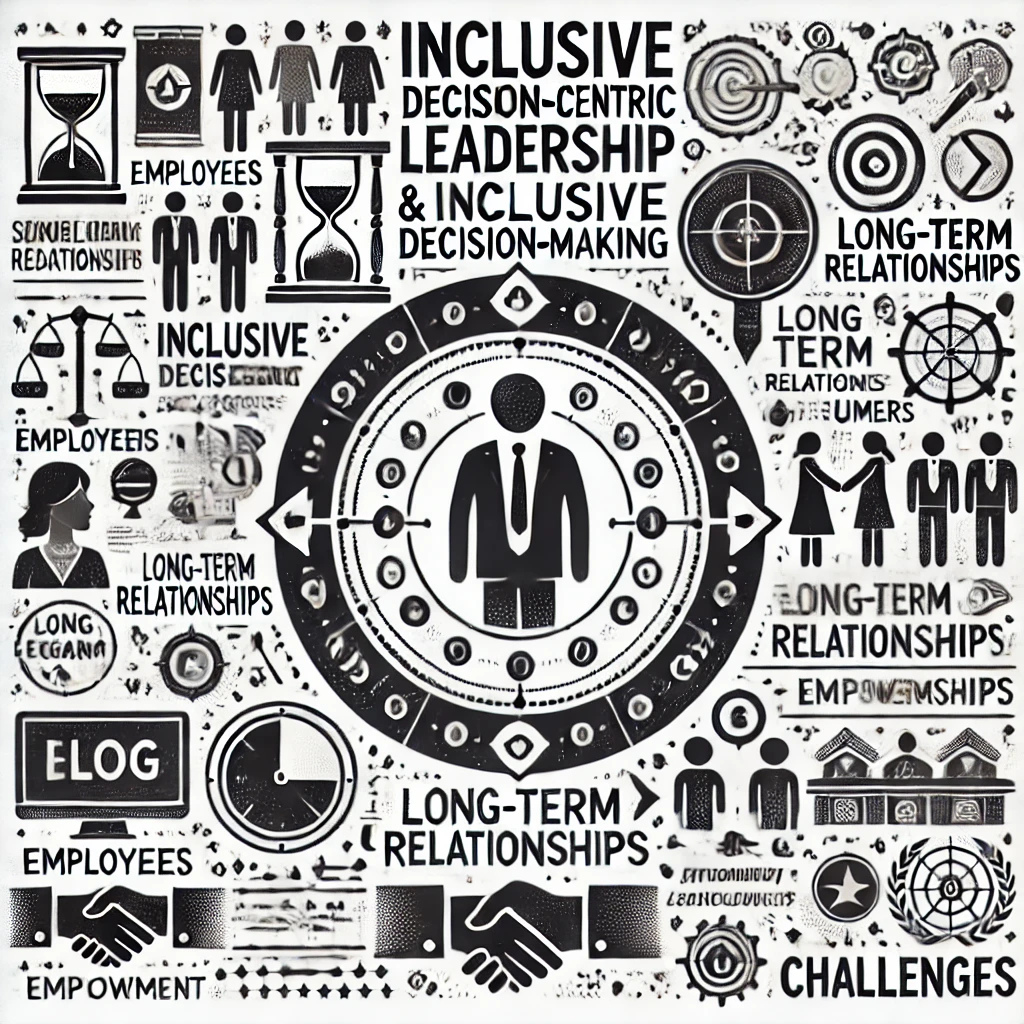A Critical Analysis of Strategies for Fostering Collaborative Relationships in Modern Organizations
In an increasingly complex and interconnected world, stakeholder-centric leadership has emerged as a pivotal approach for organizations aiming to foster collaborative relationships. This leadership style emphasizes understanding and addressing the diverse interests of stakeholders, including employees, customers, suppliers, and the community. Effective stakeholder-centric leadership not only enhances organizational performance but also promotes sustainable practices and ethical decision-making. This analysis critically examines key strategies for fostering collaborative relationships through stakeholder-centric leadership, supported by real-world examples and their implications.
Understanding Stakeholder-Centric Leadership
Stakeholder-centric leadership is rooted in the belief that organizations should prioritize the needs and expectations of various stakeholders rather than focusing solely on shareholder profits. This approach recognizes the interdependence between organizations and their stakeholders, suggesting that long-term success hinges on cultivating positive relationships. By actively engaging stakeholders, leaders can gain valuable insights, build trust, and enhance collaboration.
Strategies for Fostering Collaborative Relationships
1. Transparent Communication
Effective communication is fundamental to fostering collaborative relationships. Leaders must prioritize transparency in their interactions with stakeholders, ensuring that information flows freely and openly. This approach helps build trust and facilitates dialogue. For example, Patagonia, an outdoor clothing company, exemplifies transparent communication through its commitment to environmental sustainability. The company openly shares information about its supply chain practices and environmental impact, engaging customers and stakeholders in discussions about sustainability initiatives (Patagonia, 2022). This transparency not only strengthens customer loyalty but also encourages other organizations to adopt similar practices.
2. Inclusive Decision-Making
Stakeholder-centric leaders actively involve stakeholders in the decision-making process. By seeking input and feedback, leaders can ensure that diverse perspectives are considered, leading to more informed and equitable outcomes. A notable example is Unilever, which has implemented a participatory approach to product development through its "Open Innovation" strategy. This initiative encourages collaboration with external stakeholders, including suppliers and consumers, to co-create sustainable products. By involving stakeholders early in the process, Unilever has successfully launched products that resonate with consumer values and preferences, enhancing its market position (Unilever, 2022).
3. Building Long-Term Relationships
Stakeholder-centric leadership emphasizes the importance of building long-term relationships rather than merely transactional interactions. Leaders should invest time and resources in nurturing these relationships, demonstrating commitment to stakeholder well-being. Starbucks provides a compelling example of this strategy. The company has established the "C.A.F.E. Practices" program, which promotes ethical sourcing and fair treatment of coffee farmers. By fostering long-term partnerships with coffee growers and investing in their communities, Starbucks not only secures a sustainable supply chain but also enhances its brand reputation (Starbucks, 2022). This commitment to long-term relationships ultimately contributes to organizational resilience and success.
4. Empowerment and Development
Effective stakeholder-centric leaders empower their stakeholders by providing opportunities for growth and development. By investing in training and capacity-building initiatives, organizations can enhance stakeholder capabilities and foster a sense of ownership. Microsoft exemplifies this approach through its commitment to employee development and diversity. The company has implemented programs to upskill its workforce and promote inclusivity, ensuring that employees feel valued and supported (Microsoft, 2021). This empowerment not only boosts employee morale but also enhances organizational innovation and performance.
Challenges and Considerations
While stakeholder-centric leadership offers numerous benefits, it also presents challenges. Balancing the diverse interests of stakeholders can be complex, requiring leaders to navigate conflicting priorities. Additionally, the need for transparency may expose organizations to scrutiny, necessitating a proactive approach to managing potential backlash. Leaders must also be equipped to handle power dynamics among stakeholders, ensuring that marginalized voices are heard and considered (Andress et al., 2020).

In conclusion, stakeholder-centric leadership is crucial for fostering collaborative relationships in modern organizations. By employing strategies such as transparent communication, inclusive decision-making, long-term relationship building, and stakeholder empowerment, leaders can effectively engage diverse stakeholders and drive organizational success. Real-world examples from companies like Patagonia, Unilever, Starbucks, and Microsoft illustrate the positive impact of stakeholder-centric practices on both organizational performance and stakeholder satisfaction. As organizations navigate an increasingly complex landscape, embracing stakeholder-centric leadership will be essential for achieving sustainable growth and fostering a culture of collaboration.
References:
- Andress, L., Hall, T., Davis, S., Levine, J., Cripps, K., & Guinn, D. (2020). Addressing power dynamics in community-engaged research partnerships. Journal of Patient-Reported Outcomes, 4(1). https://doi.org/10.1186/s41687-020-00191-z
- Microsoft. (2021). Diversity and inclusion at Microsoft. Retrieved from https://www.microsoft.com/en-us/diversity/inclusion
- Patagonia. (2022). Our environmental and social responsibility. Retrieved from https://www.patagonia.com/environmental-responsibility/
- Ruppanner, L., & Pruitt, D. G. (2016). Cultural differences in conflict resolution strategies. International Journal of Conflict Management, 27(2), 218-239. https://doi.org/10.1108/IJCMA-05-2015-0033
- Starbucks. (2022). Ethical sourcing. Retrieved from https://www.starbucks.com/responsibility/sourcing/ethical-sourcing
- Unilever. (2022). Open innovation at Unilever. Retrieved from https://www.unilever.com/sustainable-living/